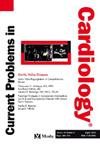Characteristics and clinical outcomes in malignant phase hypertension patients using cluster analysis: A report from the West Birmingham Malignant Hypertension Registry
IF 3.3
3区 医学
Q2 CARDIAC & CARDIOVASCULAR SYSTEMS
引用次数: 0
Abstract
Purpose
Malignant hypertension (MHT) is a condition with high morbidity and mortality, necessitating a deeper understanding of its clinical heterogeneity for improved patient management. Aim of our study was to identify/characterize specific phenotypic groups and examine their associations with mortality.
Methods
Data from the West Birmingham MHT Registry were used. We performed two-step cluster analysis to determine distinct groups. Kaplan-Meier curves and Cox proportional hazard models were used to examine the associations of clusters with mortality.
Results
323 patients (mean age 49±13 years; 34 % female) with a median follow-up of 11 (IQR 3-18) years were included. Four clusters were identified; Cluster 1: younger age, intermediate prevalence of cardiovascular risk factors, high prevalence of renal/retinal damage; Cluster 2: older age, female, low prevalence of cardiovascular risk factors, intermediate levels of organ damage; Cluster 3: intermediate age, male, high prevalence of cardiovascular risk factors, high retinal damage; Cluster 4: younger age, male, low prevalence of cardiovascular risk factors, low prevalence of organ damage. In Kaplan Meier curves cluster 4 exhibited the lowest risk, while cluster 3 the highest risk for outcomes (log rank p < 0.001). In Cox regression, all clusters had higher risk of mortality compared to cluster 4; cluster 1 [HR 1.74 (1.07-2.82)], cluster 2 [HR 1.87 (1.20-2.91)], cluster 3 [HR 2.35 (1.54-3.58)].
Conclusions
Four distinct phenotypic clusters were identified within our registry, having diverse associations with mortality. These clusters offer a framework for more targeted risk stratification and prognostication, with implications for individualized patient care in this high-risk hypertensive population.
使用聚类分析的恶性期高血压患者的特征和临床结果:一份来自西伯明翰恶性高血压登记处的报告
恶性高血压(MHT)是一种高发病率和死亡率的疾病,需要深入了解其临床异质性,以改善患者管理。我们研究的目的是鉴定/表征特定表型组,并检查它们与死亡率的关系。方法使用来自西伯明翰MHT登记处的数据。我们进行了两步聚类分析来确定不同的组。Kaplan-Meier曲线和Cox比例风险模型用于检验聚类与死亡率的关系。结果323例患者(平均年龄49±13岁;34%为女性),中位随访时间为11年(IQR 3-18)。确定了四组;第一类:年龄较小,心血管危险因素患病率中等,肾/视网膜损伤患病率高;第二组:年龄较大,女性,心血管危险因素患病率低,器官损害程度中等;第三组:中年,男性,心血管危险因素患病率高,视网膜损伤程度高;第4组:年龄较小,男性,心血管危险因素患病率低,器官损害患病率低。在Kaplan Meier曲线中,第4类风险最低,而第3类风险最高(log rank p <;0.001)。在Cox回归中,所有聚类的死亡风险均高于聚类4;集群1 [HR 1.74(1.07-2.82)],集群2 [HR 1.87(1.20-2.91)],集群3 [HR 2.35(1.54-3.58)]。结论在我们的登记中发现了四个不同的表型簇,它们与死亡率有不同的关联。这些聚类为更有针对性的风险分层和预测提供了框架,对高危高血压人群的个体化患者护理具有指导意义。
本文章由计算机程序翻译,如有差异,请以英文原文为准。
求助全文
约1分钟内获得全文
求助全文
来源期刊

Current Problems in Cardiology
医学-心血管系统
CiteScore
4.80
自引率
2.40%
发文量
392
审稿时长
6 days
期刊介绍:
Under the editorial leadership of noted cardiologist Dr. Hector O. Ventura, Current Problems in Cardiology provides focused, comprehensive coverage of important clinical topics in cardiology. Each monthly issues, addresses a selected clinical problem or condition, including pathophysiology, invasive and noninvasive diagnosis, drug therapy, surgical management, and rehabilitation; or explores the clinical applications of a diagnostic modality or a particular category of drugs. Critical commentary from the distinguished editorial board accompanies each monograph, providing readers with additional insights. An extensive bibliography in each issue saves hours of library research.
 求助内容:
求助内容: 应助结果提醒方式:
应助结果提醒方式:


